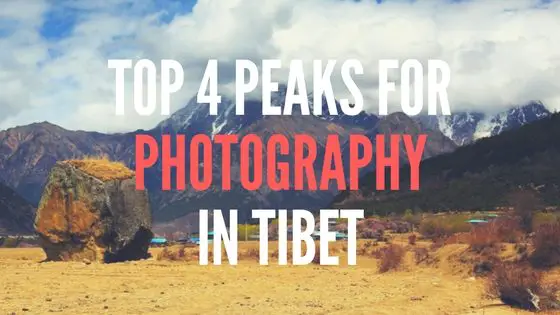Photography in Tibet is unlike anywhere else in the world, with the high, Himalayan peaks and the wide expansive plains. Nowhere on earth can compare to the majestic beauty of this high-altitude plateau, or the uniqueness of the landscape and the people. Join-in Tibet Tour and Travel will make you love take photos, and visitors from all over the world travel there every year to take shots of the mountains, lakes, palaces, and monasteries that abound on this high plateau land.
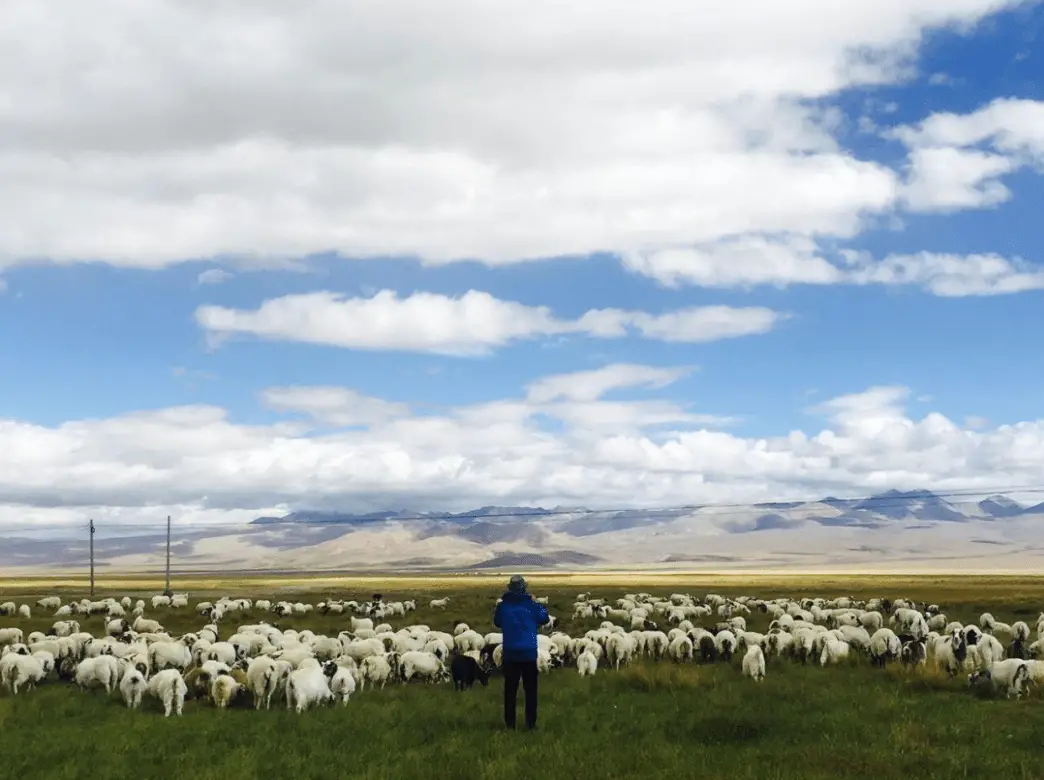
Tibet is a naturally perfect place to get the best shots of the world’s highest mountains. With eight of the ten highest mountains in the world within its borders, and great views of all of them, photographing the mountains is a delight for photographers in Tibet. No matter where you go across the region, you will find an amazing mountain to photograph, and many other things besides. From the sacred lakes of Yamdrok, Manasarovar, and Namtso, to the most sacred site in the world, Mount Kailash, thaking photos is the most popular way to record your trip and collect those special memories for reminding of later on.
Overview of Distinct Topography on Tibetan Plateau
The topography of Tibet is one of high plateau landscapes, high mountains, lush valleys, and immense plains. The landscape is naturally charming, and its main characteristic is the outstanding variety of scenery and landscapes from one end of the plateau to the other.
The landscape of the plateau is as unique as the plateau itself, with high mountains surrounding the western and southern edges, and various mountain ranges spread across its wide breadth. All across the plateau are stunning lakes that have lasted for thousands of years in the same state, and wide, expansive plains and prairies that stretch as far as the eye can see.
Top 4 Peaks Overview
Tibet has numerous mountains, many of them over 7,000 meters tall, and several that are more than 8,000 meters. With thousands of mountains spread across five mountain ranges to choose from, picking out the best could be a hard choice. However, there are four mountains that stand out from the rest in terms of photography, and which will provide you with some of the beat photographs you have ever taken.
Mt. Kailash
Mount Kailash lies in the Gangdise Mountains in Ngari Prefecture, in the far west of Tibet. Known as the holy mountain, it is a sacred site for four religions and the site of thousands of pilgrimages every year. Held in reverence by Hindus, Buddhists, Jains, and the Bonpo, Mount Kailash is regarded as the holiest mountain in the world. Around its base runs the holy kora route, which pilgrims walk in reverence of the mountain, often prostrating themselves on the ground in prayer as they travel. Believed to be able to wash away a lifetime of sin, even those who are not Buddhist can appreciate the magnificence and splendor of this pyramid-shaped mass of black rock that stands tall over the surrounding mountains.
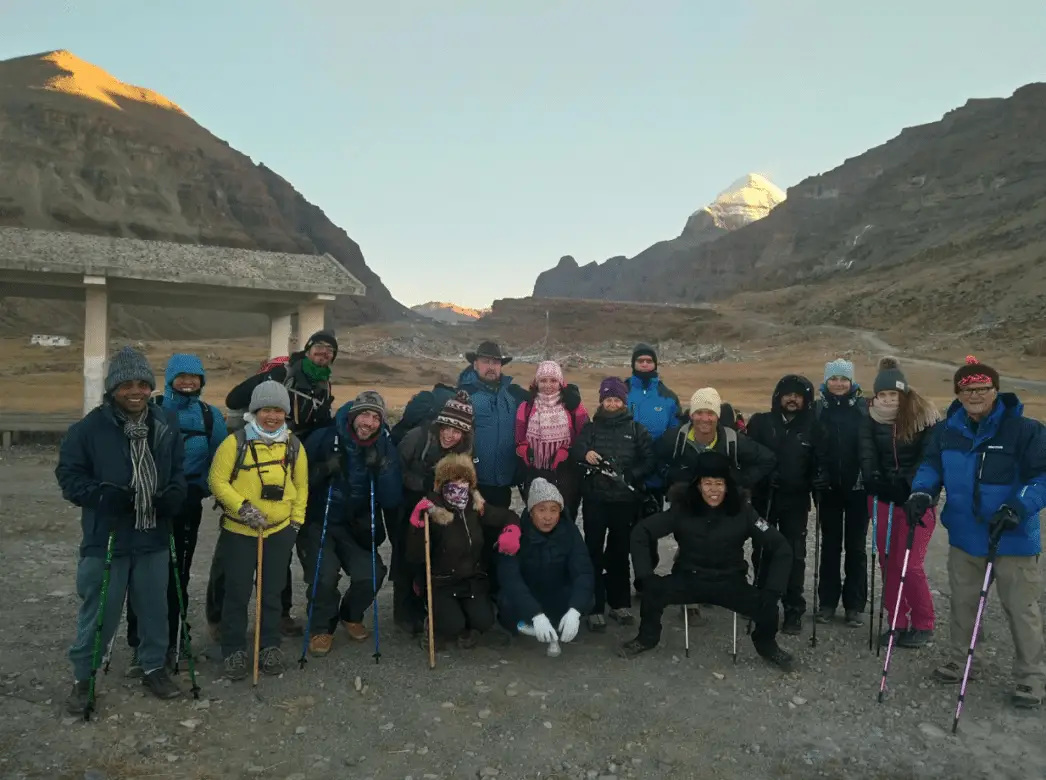
Known locally as the “Precious Jewel in the Snow”, Mount Kailash holds some of the most beautiful scenery and landscapes in Tibet, and when walking the kora around its base, travelers are treated to sublime delights of scenery. From the high pass at Dolma-La to the lush green valley below, and the stunning monasteries of Drirapuk and Dzultripuk, the route is one of amazing sights and spectacular landscapes.
The best time to photograph the mountain is around an hour before the sun rises over the hills to the hour after it has crested the horizon, or from just before sunset, as the light shines on the western face of the mountain. These are the times when the light is most favorable, and the best shots can be found. To get the best shot of the mountain, the prime location is a few kilometers away in the Laqu Valley. From here, you can see the mountain clearly, and the surrounding hills and gullies make for a great backdrop to this spectacular holy site.
Mt. Everest
No one traveling to Tibet could pass up the opportunity of capturing the world’s most famous mountain, Mount Everest. At 8,848 meters tall, the mountain is a massive sight and is one of the most photographed mountains in the world. Lying exactly on the border with Nepal, in western Tibet, Everest is best photographed between March and May or from September to October, when the weather is clearest and the mountain is in full view. Summers in Tibet can mean clouds can cover the peak, and getting a good shot can be a hit-or-miss affair.
There are several places where you can get a great shot of the mountain in all its majestic glory. The first, and most popular, is from Everest Base Camp (EBC) itself. Thousands of people visit EBC every year, and the view of the mountain this close is astounding. The sheer size of Everest is awe-inspiring, and many photos are taken from the base camp. The base camp is set in the valley approach to Everest, and one can change the angle and the shot simply by moving from one side of the valley to the other.
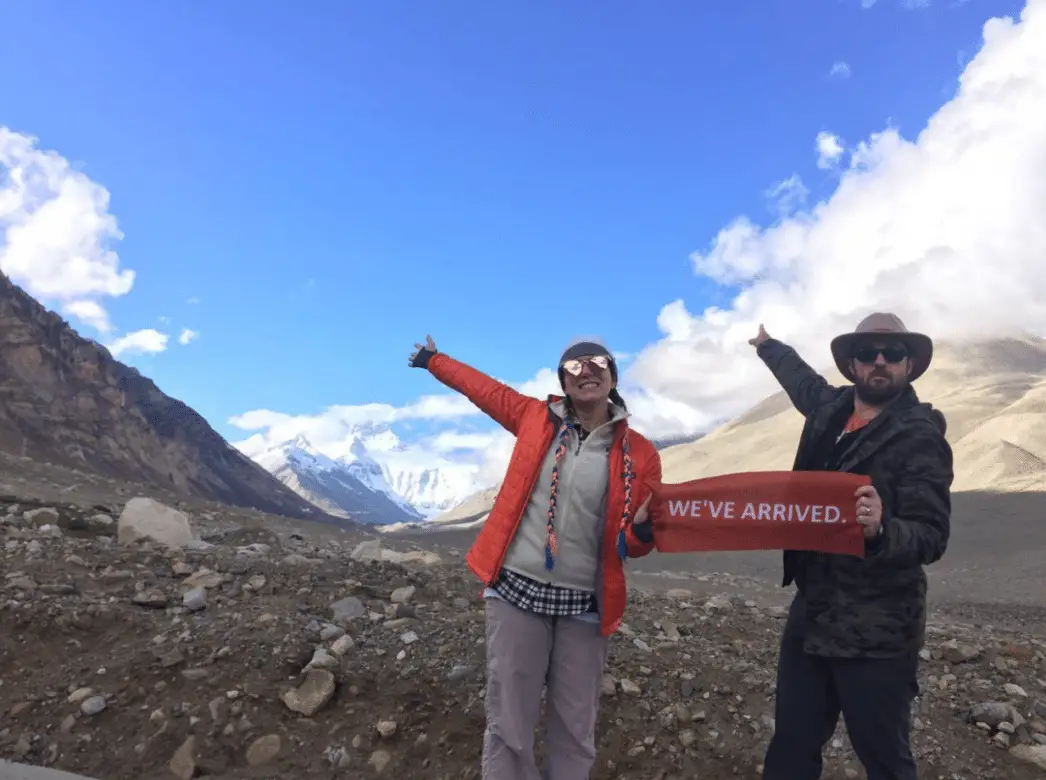
Not too far away, and a stopping place for many who tour Tibet to Everest, is the famous Rongbuk Monastery. The highest monastery in the world, it is one of the best places for viewing and photographing the mountain. Behind the monastery, there is a hill, which you can climb to the top of, and which gives an amazing view of the mountain. Sunrise and sunset are the best times to photograph from there, and the sunset shining orange on the side of the mountain is an astounding sight. You can even add some depth to the photos by including the white tower of the monastery in the foreground.
Gawu La Pass, on the road to Rongbuk, is relatively close to the mountain, and has some of the best views of the nearby mountain peaks of Cho Oyu, Everest, Lhotse, and Makalu. All four of these mountains are above 8,000 meters, and it is a rare opportunity to be able to capture all four from one place. However, the wind can be quite strong, so a pegged tripod may be necessary to get some steady shots. A good 300-millimeter lens is best for the distance shots of the mountains.
Mt. Namcha Barwa
Namche Barwa is ranked as number one in the top ten most beautiful mountains in China, and is located in eastern Tibet, where the Yarlung Zangbo River makes its famous u-turn to form the beginning of the world’s largest canyon. Regarded as being the highest peak in the eastern Himalayas, it is believed to be the gathering ground for Tibetan deities, and is often covered by clouds for most of the year, making photography of the peak a rare experience. Known locally as “the burning thunders’, the Yarlung Zangbo River makes a great foreground for the photos of the mountain.
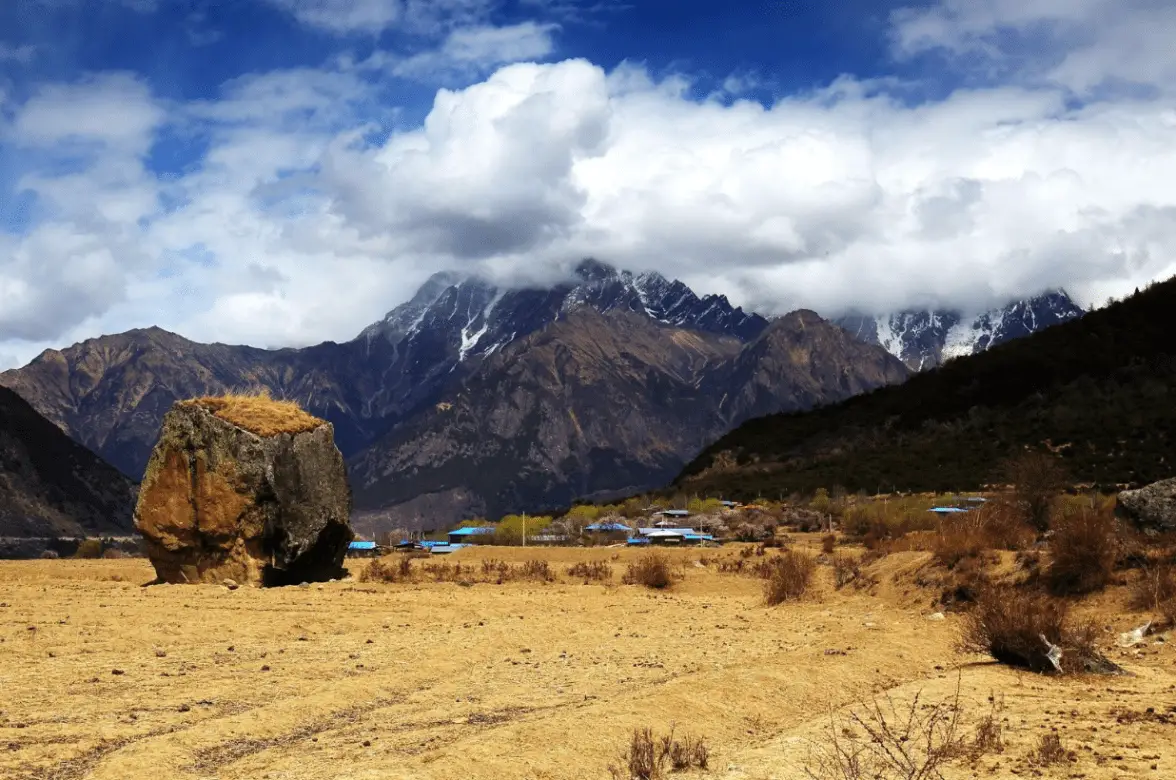
Autumn and winter are the best times to travel to the mountain for photography, as the skies are most likely to be clearer at these times, and the light is perfect for photography. One of the best places to view and photograph the mountain is from the Seche La Mountain Pass, on the Bayi-Pome section of the Chuanzang Highway. There is an observatory at the peak of the pass from which you can get a good angle on the mountain. Use the light and shadows at the right time to get the best shot, or the composition can end up being fairly dull.
At the head of the great Yarlung Zangbo Grand Canyon lies the lower Tripe Observatory, from where you can get a great low-angle shot of the mountain, with the canyon in the foreground for depth. The observatory is reached from the village of Pai, and is a 3.5 hour hike from the village.
Mt. Shishapangma
Mount Shishapangma is one of the 14 highest peaks in the world, at a height of 8,013 meters. Located a few kilometers from the Nepal border, it is the only 8,000 meter mountain that is wholly in Tibet. Shishapangma is described in Sanskrit as “the Place of Saints”, and the mountain looks unapproachable and apathetic from a distance. Shishapangma is unique in that it has three distinct peaks, the other two being 8,008 meters high and 7,966 meters high.
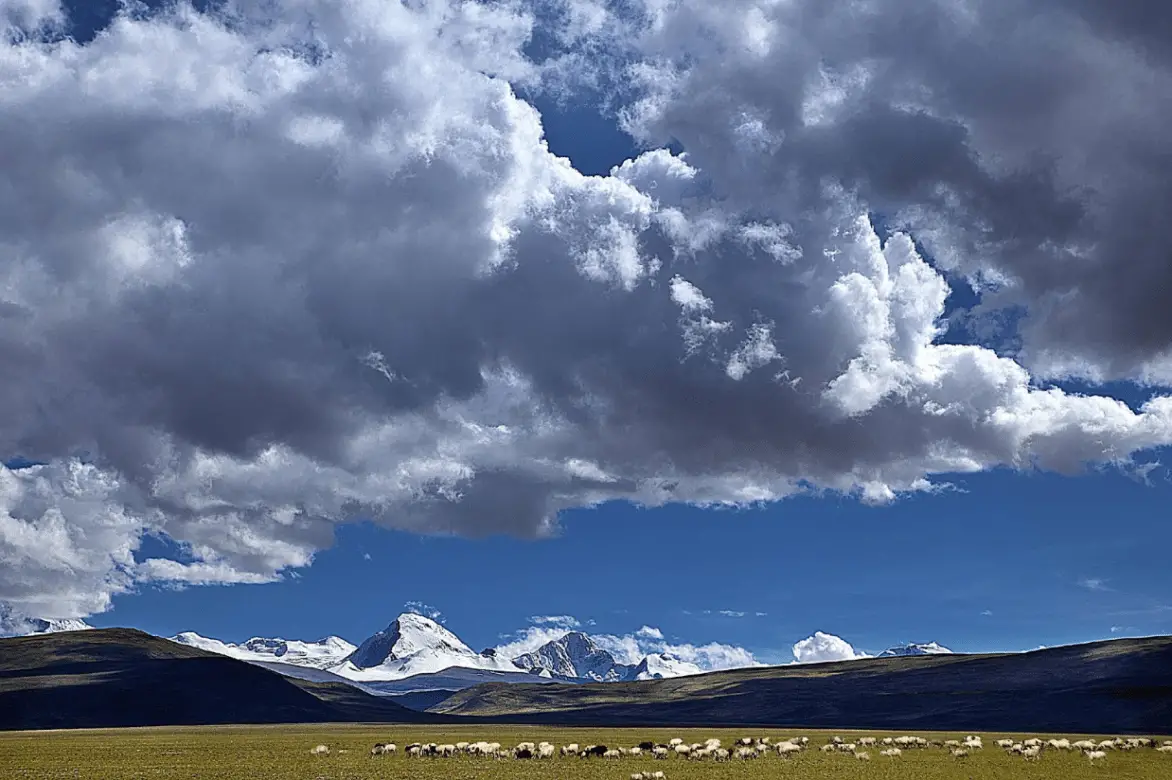
One of the most spectacular shots of the mountain is that which includes the stunning snow-covered glacier on its flanks, which covers an area of almost 6,000 square kilometers. Shishapangma, along with a few other mountains in the region, create a distinct glacial climate that brings in the heavy snowfalls in the winter months. If you can get good enough light at the mountain, there is a stunning ice-tower forest that makes an excellent scene for photography. All of the glaciers there have elegant forms that are exceptional for photographers, and have been formed through the erosion of the ice by the high Himalayan winds. The Nyalam Tong La Pass and the Last Pass are the best places to get good shots of the mountain and the ice forests, and a tripod is essential equipment due to the high winds across the passes.


